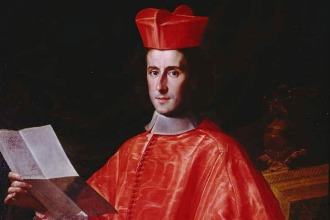Georg Friedrich Handel – La Resurrezione (HWV47)
Georg Friedrich Handel – La Resurrezione (HWV47)
La Resurrezione, composed during the young Handel’s period in Rome was first performed there in 1708, set to libretto by Carlo Sigismondo Capece. Capece was court poet to Queen Maria Casimira of Poland, who was living in exile in Rome. The work recounts the events of Easter and the solo singers portray Lucifer, Mary Magdalene, an Angel, St John the Evangelist, and St Mary Cleophas.
Handel – La Resurrezione
It calls upon a large orchestra, led and directed at the first performance by the master violinist Arcangelo Corelli.

Georg Friedrich Handel
According to Mainwaring, in 1706 Handel travelled to Italy at the invitation of Ferdinando de Medici. (John Mainwaring (1735–1807) was an English theologian and the first biographer of Georg Friedrich Händel.)
Ferdinando tried to make Florence Italy's musical capital, attracting the leading talents of his day. He had a keen interest in opera. In Italy Handel met librettist Antonio Salvi, with whom he later collaborated. Handel left for Rome and, since opera was (temporarily) banned in the Papal States, composed sacred music for the Roman clergy.

Ferdinando De Medici
His famous Dixit Dominus (1707) is from this era. He also composed cantatas in pastoral style for musical gatherings in the palaces of cardinals Pietro Ottoboni, Benedetto Pamphili and Carlo Colonna. Two oratorios, La Resurrezione and Il Trionfo del Tempo, were produced in a private setting for Francesco Ruspoli and Ottoboni in 1709 and 1710, respectively.

Pietro Ottoboni
The staging and scenery in 1708 were lavishly produced, and though Roman censorship of the time forbade opera, La resurrezione was certainly produced in an operatic manner. It was produced at Ruspoli's Palazzo in the main hall on the ground floor. A series of terraced seats, 4 in number, was built for the orchestra, curved towards the audience and rising at the back. Twenty-eight specially commissioned music stands were built for the occasion, engraved with either the coat-of-arms of Ruspoli or his wife. The proscenium was decorated with a tapestry depicting cherubs, palm trees, and foliage: in the middle of which hung a plaque with the name of the oratorio.

Francesco Ruspoli
The role of Mary Magdalene was sung at the first performance by the soprano Margherita Durastanti. The participation of female singers was prohibited by Papal edict, and the Pope went to the length of admonishing Ruspoli for permitting Durastanti to take part. For the remaining performances, her role was sung by a castrato. The only details given concerning this individual are that he was called "Pippo", and that he was in service to the former Queen Casimiri.

Margherita Durastanti
In his early oratorios Handel laid foundation for the traditional use of the chorus which marks his later oratorios. Handel became sure of himself, broader in his presentation, and more diverse in his composition.

La Resurrezione by Tintoretto
Last Updated (Friday, 13 March 2015 17:54)








